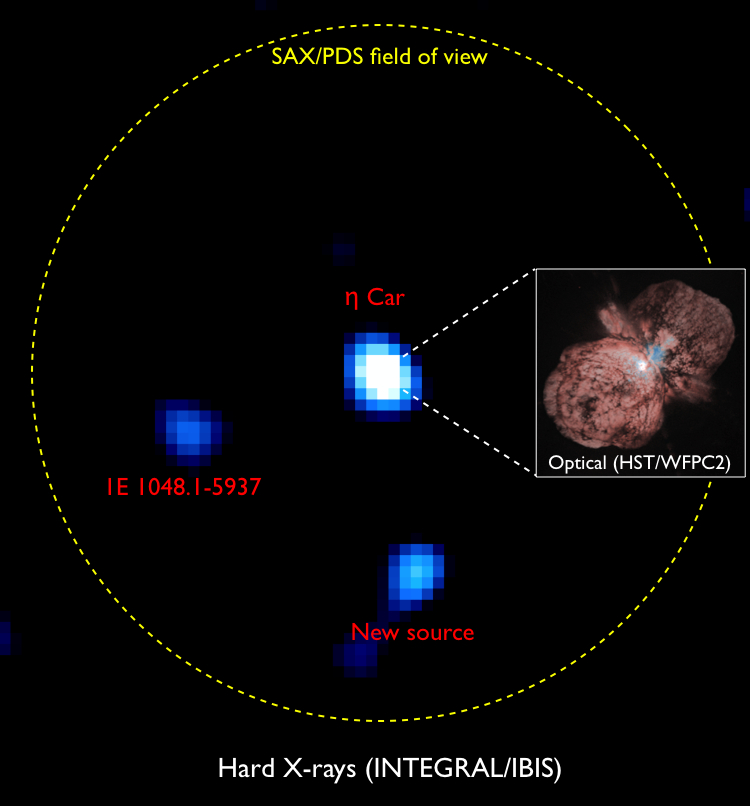
 Credit: J.-C. Leyder, R. Walter & G. Rauw; ESA
Credit: J.-C. Leyder, R. Walter & G. Rauw; ESA
Hard CWB
One of the exciting discoveries of the Compton Gamma-Ray Observatory was the discovery of populations of unidentified gamma-ray sources. Many theories have been put forth to explain what these sources might be. It's been suggested that some of these mysterious sources might be colliding wind binaries. Colliding wind binaries are composed of two massive stars possessing strong stellar winds. These stellar winds ram into each other in the space between the two stars, producing a strong shock and high temperature X-ray emission. Such a shock could, under the right circumstances, produce lots of very fast electrons which, if they collide with ultraviolet photons from the surfaces of the stars, can boost the energy of those photons into the very hard X-ray ray or even Gamma-ray band. Now the INTEGRAL observatory, in a very long exposure shown above, has imaged a colliding wind binary in the hard X-ray band. This source is an old friend named Eta Carinae, consisting of one of the most massive stars in the Galaxy, paired with an unseen, massive companion in a very eccentric, 2024 day orbit. Astronomers will be keeping a close eye on Eta Car in January 2009, when the two stars reach there closest approach and the companion skims the surface of its superbright, unstable companion. A good start to the International Year of Astronomy.
<
HEA Dictionary ● Archive
● Search HEAPOW
● Other Languages
● HEAPOW on Facebook
● Download all Images
● Education ● HEAD
>
Each week the HEASARC
brings you new, exciting and beautiful images from X-ray and Gamma ray
astronomy. Check back each week and be sure to check out the HEAPOW archive!
Last modified Tuesday, 27-Feb-2024 10:10:05 EST


